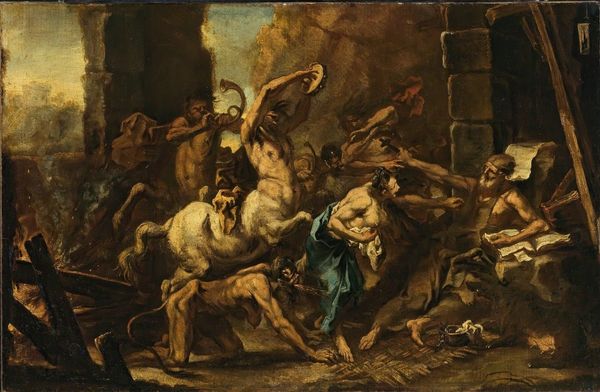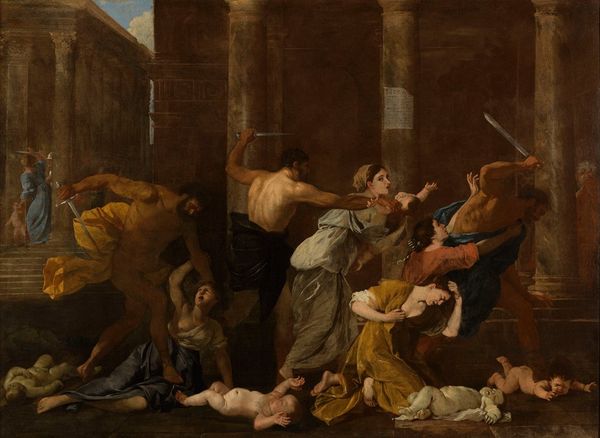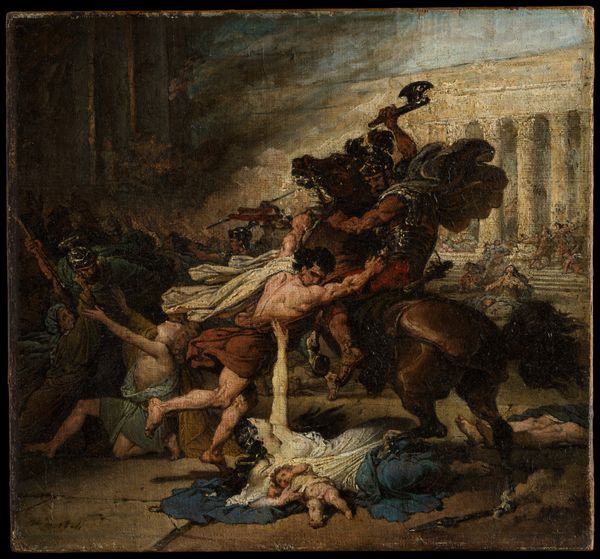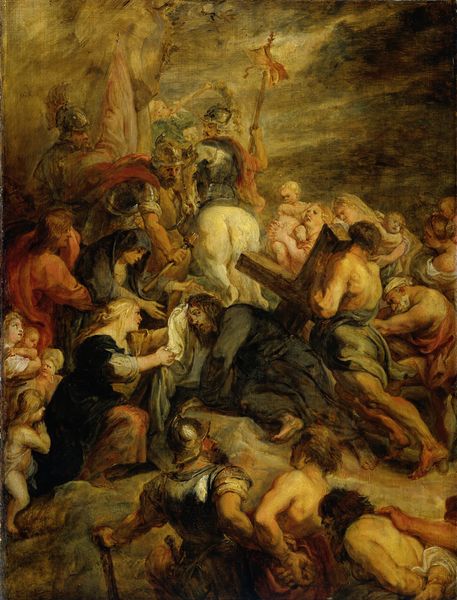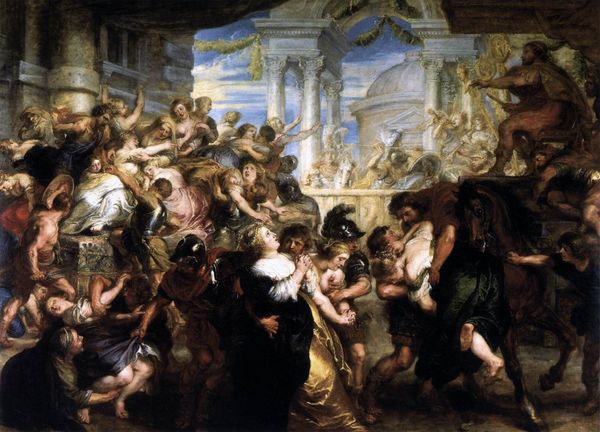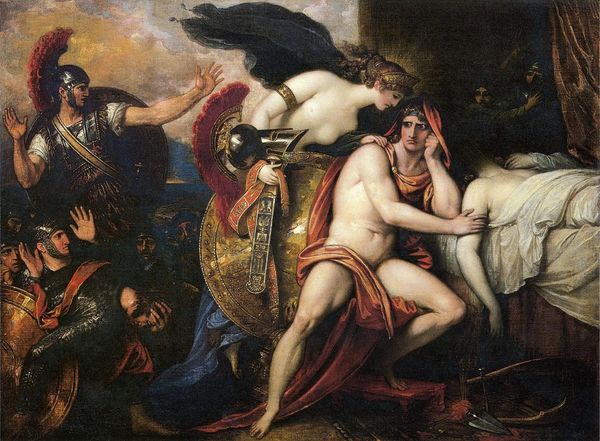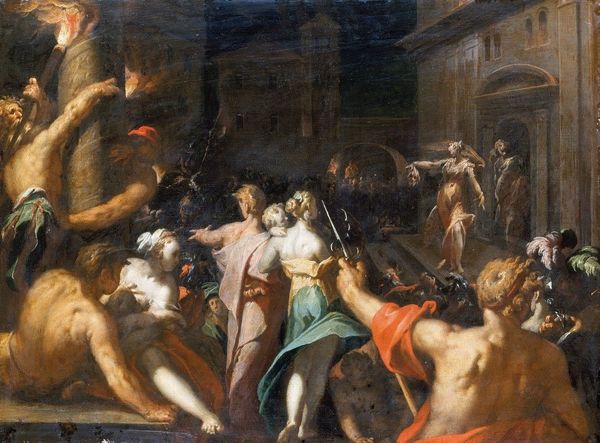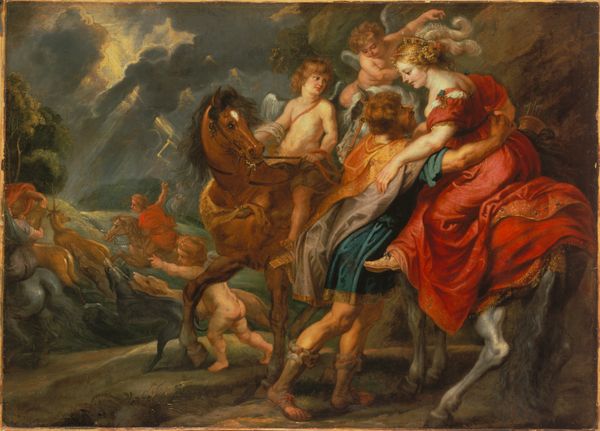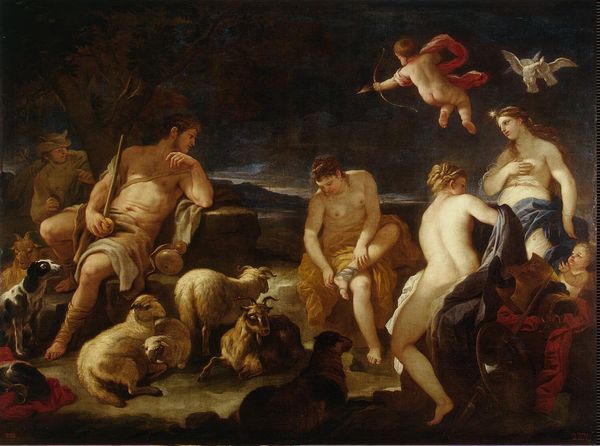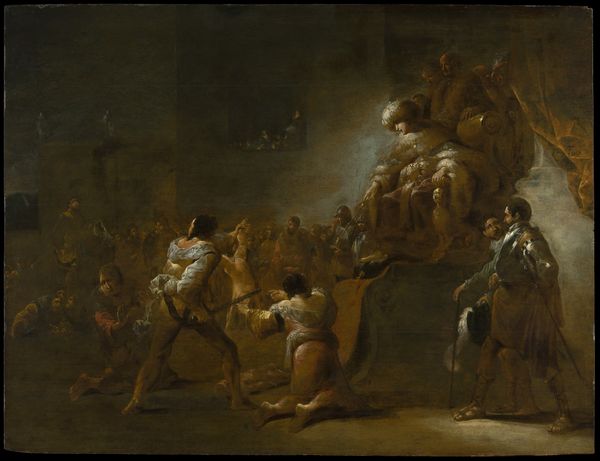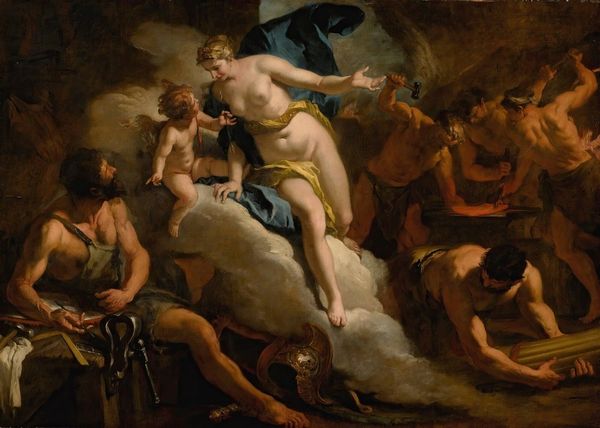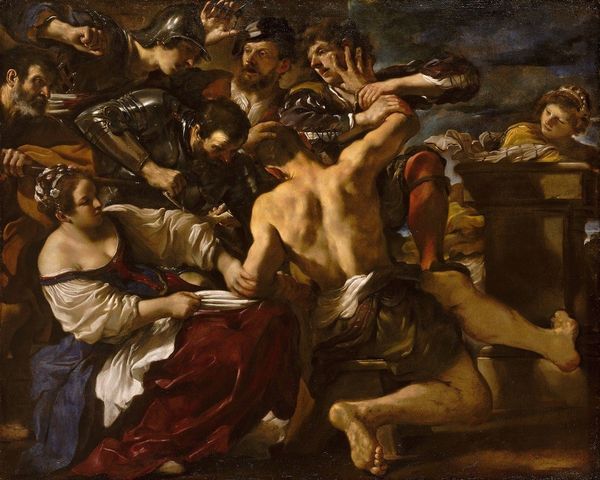
oil-paint
#
oil-paint
#
landscape
#
figuration
#
oil painting
#
romanticism
#
horse
#
mythology
#
history-painting
Dimensions: 60 x 45 cm
Copyright: Public domain
Curator: Welcome. Today we're looking at Théodore Géricault's 1817 painting, "The Wild Horse Race at Rome," rendered in oil. Géricault painted this while in Italy, part of his quest to absorb artistic traditions beyond France. Editor: It's raw, isn't it? Chaotic. You immediately feel the horses' panic and the brute force of the men trying to control them. The earthy tones contribute to that sense of visceral struggle. Curator: Indeed. Géricault witnessed the annual Berber horse race during Carnival in Rome. The event itself was steeped in social performance, and the ritual control of powerful animals showcased human mastery. Editor: I'm struck by the exposed muscles of both man and beast – the composition screams about exertion. But also the painting subtly asks, who really has control? There’s an inherent imbalance of power being visually negotiated here, raising a bunch of complicated political and social questions. Curator: Well, Géricault’s style, while Romantic, engages with both Classical history and contemporary events, reflecting the turbulence of post-Napoleonic Europe. These races, though festive, occurred within a very rigidly stratified society. Editor: Absolutely. Looking at this painting through the lens of animal studies, you start to question that claim to human dominion. There’s a sensitivity to the horses’ distress that can read as a critique. And who are these men doing the capturing and controlling? Where do they come from in this hierarchy? Curator: Géricault, notably, went on to paint the "Raft of the Medusa," which similarly explored themes of power, chaos, and societal breakdown on a much grander scale. Editor: Right, and there's a kinship in that kind of human tragedy on full display, but here that breakdown is intimately entangled with the treatment of non-human beings as property and instruments of power. We have to remember the broader politics of Romanticism to really engage with what this image is telling us. Curator: A very apt observation. I see, once more, new depths in Géricault’s work. Editor: It's always more nuanced than we might initially perceive.
Comments
No comments
Be the first to comment and join the conversation on the ultimate creative platform.


